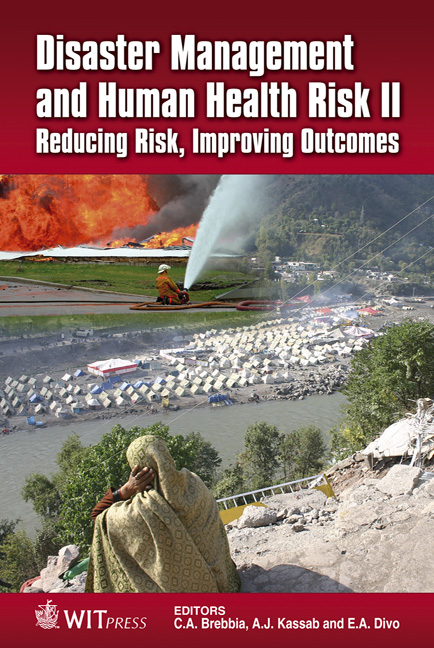Capturing Community Influence On Public Preparedness
Price
Free (open access)
Transaction
Volume
119
Pages
12
Page Range
183 - 194
Published
2011
Size
376 kb
Paper DOI
10.2495/DMAN110171
Copyright
WIT Press
Author(s)
F. Petit, R. Fisher, J. Yaeger & M. Collins
Abstract
Regardless of the measures put in place to prevent or mitigate them, natural and man-made hazards remain a daunting challenge for community leaders tasked with ensuring public safety. Governments and other organizations can provide services to protect and respond to their citizens’ needs in an emergency, but ultimately, the relative resilience of a community relies, to a large extent, on the preparedness of the individuals living within it. While individual preparedness is determined largely by personal attributes, another important determinant is the influence of the community on the knowledge base and available resources of its members. To capture the influence that a community can have on instilling and increasing preparedness competencies in its population, Argonne National Laboratory has developed a public preparedness index. The index captures aspects such as disaster public education programs, crisis communication, public communication, citizen preparedness groups, and additional resources such as community shelters and evacuation routes/plans. This index allows community leaders to (1) better understand how well they are equipping their citizens to face potential hazards and (2) identify areas for improvement. As increased emphasis is placed on better equipping communities to face potential hazards, it is vital that those communities also understand how their actions affect the preparedness of their citizens. Keywords: emergency management, public preparedness, regional resilience, critical infrastructures. 1 Introduction The assessment of community resilience is complex because the term needs to characterize the resilience of organizations and infrastructures, as well as the
Keywords
emergency management, public preparedness, regional resilience, critical infrastructures




